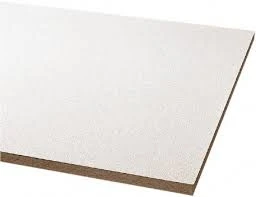8 月 . 10, 2024 11:20 Back to list
Exploring Various Sizes and Options for Ceiling Hatches for Your Home or Building Needs
Understanding Ceiling Hatch Sizes Importance and Options
Ceiling hatches, often overlooked in building design, play a critical role in providing access to hidden areas such as attics, roof spaces, or mechanical systems located above ceilings. The size of these hatches is an essential consideration, influencing not only access but also safety, functionality, and aesthetics of both residential and commercial spaces.
The Importance of Correct Sizing
When planning for a ceiling hatch, determining the correct size is paramount. If a hatch is too small, it may hamper access to vital areas, making maintenance or inspections difficult. Conversely, an oversized hatch could compromise the structural integrity of the ceiling and potentially affect the insulation or aesthetic appearance of the space.
The sizing of ceiling hatches is often dictated by the specific requirements of the space it serves. For instance, if the hatch is intended for accessing mechanical systems, a larger hatch may be required to allow for the safe and easy movement of equipment. In residential settings, standard sizes are typically around 2 feet by 2 feet or 2 feet by 4 feet, but custom sizes are also available depending on the particular need.
Common Sizes and Standards
In the construction industry, it's common to adhere to certain standard sizes for ceiling hatches to ensure compatibility with building systems
. The most frequently used hatch sizes include- 2' x 2' (24 x 24) This size is typically used in residential settings for light access to attic spaces. It provides enough room for routine inspections or minor repairs.
- 2' x 4' (24 x 48) This is a more versatile size, often employed in both residential and commercial applications. It allows greater accessibility for larger equipment or supplies.
ceiling hatch sizes

- 3' x 3' (36 x 36) This size is suitable for commercial applications, where access to mechanical rooms, ductwork, or plumbing systems might be needed.
- Custom-sized hatches In some cases, custom dimensions may be necessary to fit non-standard openings or specialized equipment.
Material Considerations
The material of the ceiling hatch is as important as its size. Common materials include steel, aluminum, and high-density polyethylene (HDPE). Steel hatches provide robust security and durability, ideal for commercial environments. Aluminum is lightweight and resistant to corrosion, which makes it suitable for both residential and commercial applications. HDPE is often used for its excellent thermal insulation properties and lightweight nature, making it a good choice for residential areas.
Installation and Compliance
Proper installation of ceiling hatches is critical to ensure they operate effectively and safely. It’s important to follow local building codes and regulations during installation to avoid any legal issues or safety violations. Additionally, ensuring that the hatch is insulated properly is vital in maintaining energy efficiency within the building.
Conclusion
In conclusion, understanding ceiling hatch sizes is crucial for ensuring effective access to concealed areas in both residential and commercial buildings. Proper sizing ensures functionality, safety, and adherence to building codes. Whether opting for standard sizes or customizing based on specific needs, paying attention to material and installation will further enhance the performance and longevity of ceiling hatches. With the right choices, ceiling hatches can facilitate access while maintaining the integrity and design aesthetics of a space.
-
Revolutionizing Interior Design with Ceilings t grid Suspended SystemNewsOct.29,2024
-
Revolutionizing Ceiling Design with ceiling access panel with Gypsum Tile WaterproofNewsOct.29,2024
-
Revolutionizing Interior Design with PVC Gypsum Ceiling: A Comprehensive GuideNewsOct.29,2024
-
Elevating Interior Design with High quality Mineral Fiber Ceiling TilesNewsOct.29,2024
-
Revolutionizing Interior Design with PVC Gypsum Ceiling: A Comprehensive GuideNewsOct.29,2024
-
Elevating Interior Design with High-Quality Mineral Fiber Ceiling Tiles: A Comprehensive GuideNewsOct.29,2024







